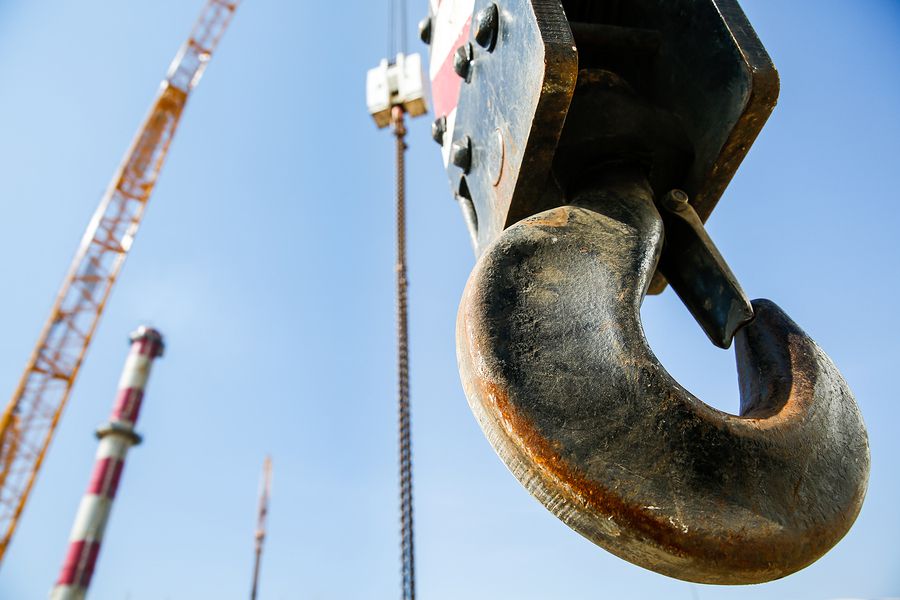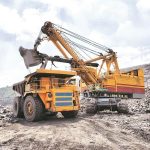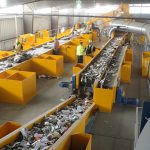Crane accidents can be caused by mechanical failures or human failures in the operations of the cranes. Even the mechanical failures can be a result of improper supervision or maintenance and all point to lack of training and required attention to crane operations by field managers.
The Need for Cranes and the Risks Involved
Cranes have become an essential part of equipment for the construction of buildings and structures, especially as the height increases. The huge loads required to be lifted, and the heights that they have to be carried to, often makes such operations fraught with risk. This risk increases when the operators also have to contend with extreme wind and weather conditions that can increase the stresses on the cranes.
Quite often the crane operations are very much part of the critical path activities on project sites. Thus accidents can cause serious loss of productivity and affect project schedules to a great extent. Because of the heights and sizes of such construction cranes, areas around the construction site can also be at risk, especially in populated areas. It is quite a standard practice for cranes to be designed and built for a particular project, so that any peculiarities regarding area to be covered, heights, materials to be lifted and safety features required, are all tailor made for that particular site. (Heavy lift cranes are also largely used in industries, but the conditions there are more controlled and the chances for an industrial crane accident are less. Even so, overhead cranes have been responsible for accidents that cause injuries and deaths.)
In spite of all the care taken in the operation of cranes and safety features installed in them, accidents do happen and have occurred over the years. Some of the crane accidents have become quite well known because of the prominence of the location, magnitude of the accident, and numbers of casualties which have included fatalities.
The Big Blue crane accident occurred in 1999 at the site of the Miller Park Stadium in Milwaukee, WI during installation of the roof segments by a crane that was 567 foot high and was lifting a roof piece weighing in at 423 tons. Test loads had been earlier carried out to ensure that the lifting mechanism and arrangements were adequate. The size of the roof piece was 260 feet by 100 feet and 13 feet high. This in itself made the load difficult to manage when winds were more than ten MPH. The accident took place when winds gusted up to 25 MPH and the resulting toppling forces of the weight and wind forces caused a failure at the base of the crane, probably causing some settling of the foundation and resulting in the crane collapsing. Metal fatigue of crane parts was also considered one of the factors.
The Deep South crane accident occurred in a Houston refinery in 2008. Alarms sounded before the collapse, and this is a definite pointer to some of the safety parameters of the crane having been exceeded. The crane had a capacity to life one million pounds and had been tested with a weight of eight hundred thousand pounds a few days before the collapse.
In 2006, in Bellevue, Washington a crane collapsed killing one person and injuring the crane operator. This industrial crane accident received a lot of publicity because of its location and the fact that crane the crashed into a number of homes and condos. According to the crane operator, the collapse occurred while he was in the process of closing down operations for the day.
The Wadleigh crane accident occurred in 2000 on an offshore drilling platform. The crane boom was lowered to zero degree level to lift a piece of equipment from a shipping vessel. Investigations revealed that operations were frequently being conducted beyond its working limits and this indicated a lack of supervision and operating norms. The accident was probably due to the fact that the laws of simple physics were ignored.
Gallery – Pictures of Crane Accidents






Reasons for Crane Failures Other than Mechanical Ones
Failures in cranes do occur due to mechanical reasons and can be a result of poor design, poor maintenance, and the bypassing of safety systems.
Failures can quite often occur due to unseasonal weather conditions. Most crane manufacturers will recommended certain weather conditions under which operations should not be undertaken. This has mainly to do with wind speeds, though extreme cold, heat, and precipitation are also some of the indicated parameters. Wind speeds are the ones that are the trickiest, as wind conditions can change suddenly and reach speeds for which the crane is not designed. Crane operators and supervisors keep a constant watch on wind meters installed at vital points on a crane.
Cranes can collapse when they are subjected to stresses which exceed those for which it has been designed. Quite often these stresses are caused by poor operations like exceeding lifting and moving speeds or slewing speeds or a combination, all of which cause lifting and torsion stresses on the crane. Collapses have also been caused by excessive loads, even though load cards are quite mandatory for crane operations. Most cranes have safety features which will not allow speeds or lifted weights to be exceeded, but there are also override features meant to be bypassed only in emergency conditions, and these may be misused.
Poor maintenance is another cause for crane collapses, and this can range from poor inspection of wire ropes to improper greasing of vital cotter pins. Collapses are also caused by poor foundations or poor positioning of counterweights.



Comments are closed